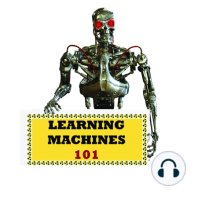27 min listen

LM101-068: How to Design Automatic Learning Rate Selection for Gradient Descent Type Machine Learning Algorithms
LM101-068: How to Design Automatic Learning Rate Selection for Gradient Descent Type Machine Learning Algorithms
ratings:
Length:
22 minutes
Released:
Sep 26, 2017
Format:
Podcast episode
Description
This 68th episode of Learning Machines 101 discusses a broad class of unsupervised, supervised, and reinforcement machine learning algorithms which iteratively update their parameter vector by adding a perturbation based upon all of the training data. This process is repeated, making a perturbation of the parameter vector based upon all of the training data until a parameter vector is generated which exhibits improved predictive performance. The magnitude of the perturbation at each learning iteration is called the “stepsize” or “learning rate” and the identity of the perturbation vector is called the “search direction”. Simple mathematical formulas are presented based upon research from the late 1960s by Philip Wolfe and G. Zoutendijk that ensure convergence of the generated sequence of parameter vectors. These formulas may be used as the basis for the design of artificially intelligent smart automatic learning rate selection algorithms. For more information, please visit the official website: www.learningmachines101.com
Released:
Sep 26, 2017
Format:
Podcast episode
Titles in the series (85)
LM101-022: How to Learn to Solve Large Constraint Satisfaction Problems: In this episode we discuss how to learn to solve constraint satisfaction inference problems. by Learning Machines 101